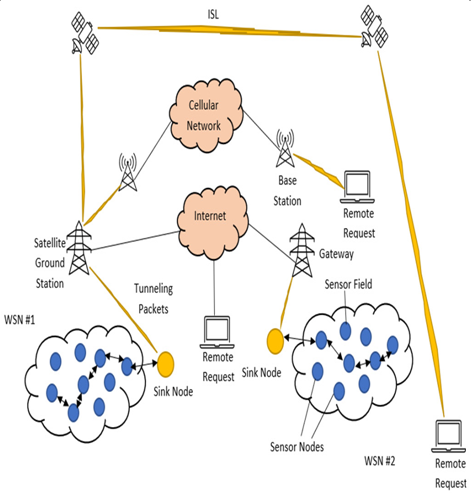The second factor of evaluating networks is understanding how the data delivery process is modeled and how the interactions between the components within the nodes would affect how protocols are designed, as well as the considerations that are to be taken. There are two main models: traffic models and energy models.
Traffic models
Traffic models focus on reducing the consumption of power by the route that is taken when delivering messages within the network. An example is in querying nodes to continuously find the path that is based on nodes that are accessed the most frequently as it would consume less power this way compared to continuously establishing paths randomly. This could lead to adaptive routing protocols, which help establish a path where an event occurs most frequently as opposed to just being on demand.
Energy models
Energy models focus more on reducing how much power is consumed by sensor communications. We can achieve this by planning to save energy naturally, such as by turning off the transceiver for a certain period. We could also reduce the number of communications that are done within the network, given that it would allow the nodes to be in an idle or sleep state if they are configured with that capability.
A case study
Now, let’s look at an industrial WSN to understand how it is provisioned and the considerations that are put into it. This industrial network is based on several areas, as shown in Figure 5.6. We can see that two main WSN clusters are connected to a sink node, where all the data from the nodes goes toward an intermediary node before being passed to a gateway at the satellite ground station. We can see that the nodes are using a location-based algorithm, which allows routing to be done based on their proximity to each other, allowing them to transmit information efficiently. This is passed through a WSN tunnel to reach the internet.
This information can then either be served directly to users or stored and processed on a cloud platform before being served to users. As we can see, this information is also passed through satellite and cellular communication directly from the base station to reach remote requesters, at which point it can be passed from satellite to satellite or base station to the base station. With this architecture, we can see how throughput, latency, and reliability are three metrics that would be very beneficial to know as part of evaluating the network, given the context of the environment and the use case. They would certainly help with understanding if the routing that’s being used is efficient, and if it meets the requirements of the environment well:

Figure 5.6 – Sample industrial WSN deployment
Now, let’s move on to a practical understanding of a smart energy monitoring and management system.

